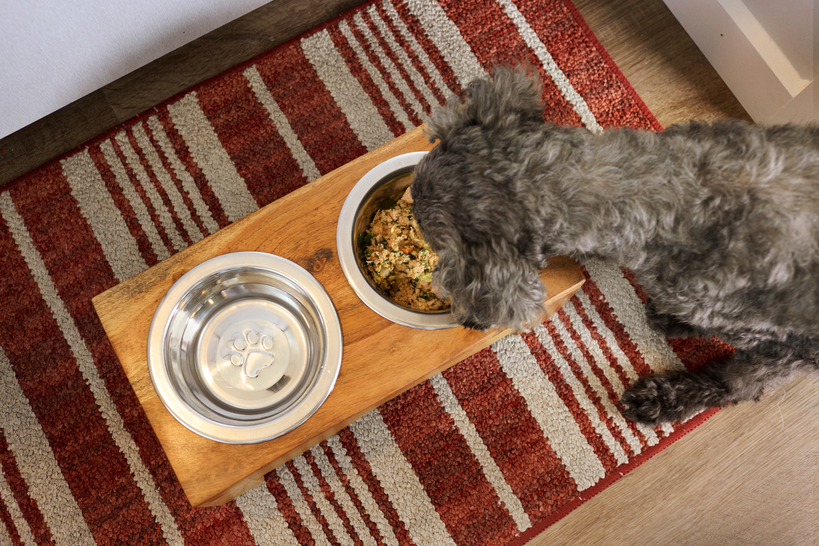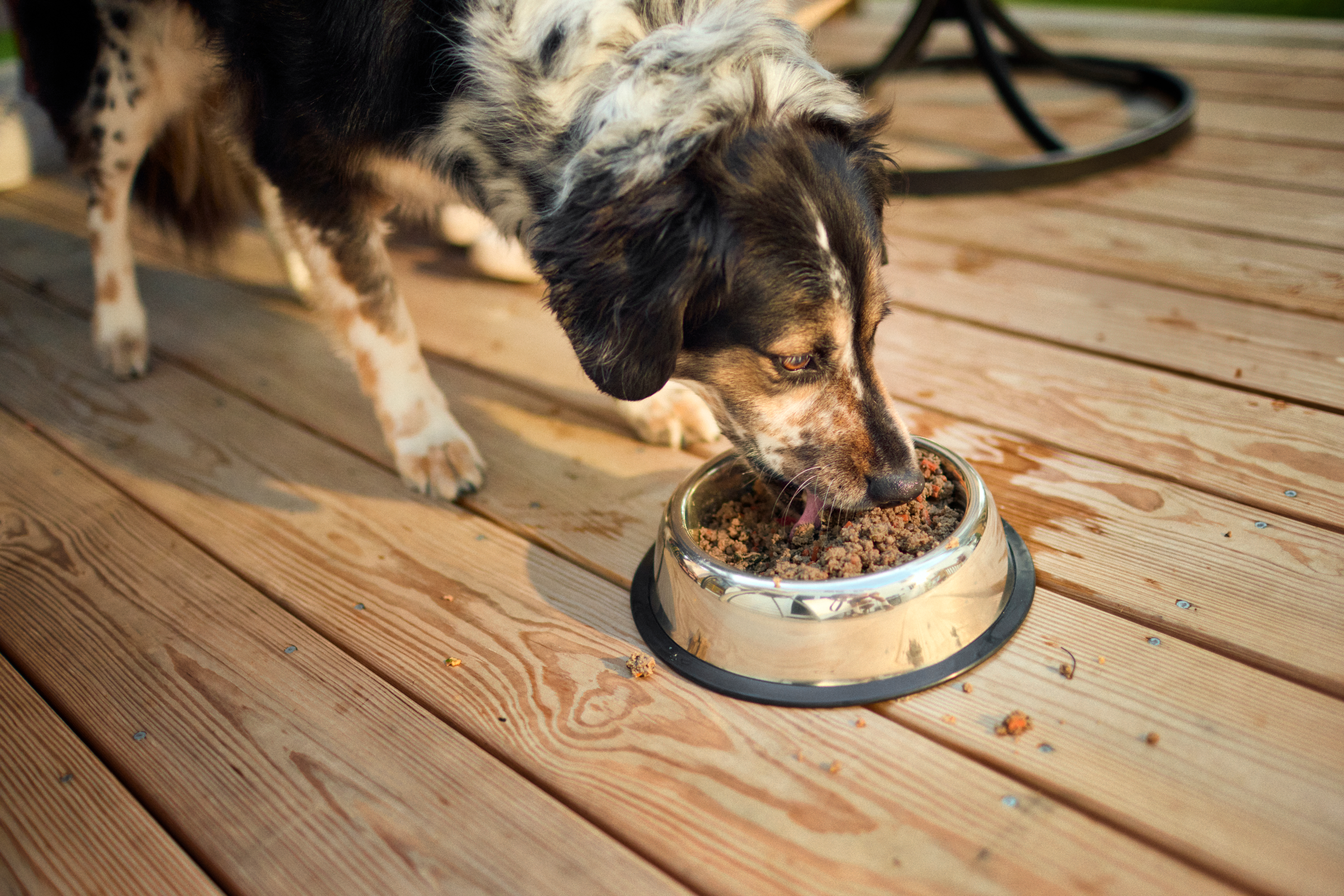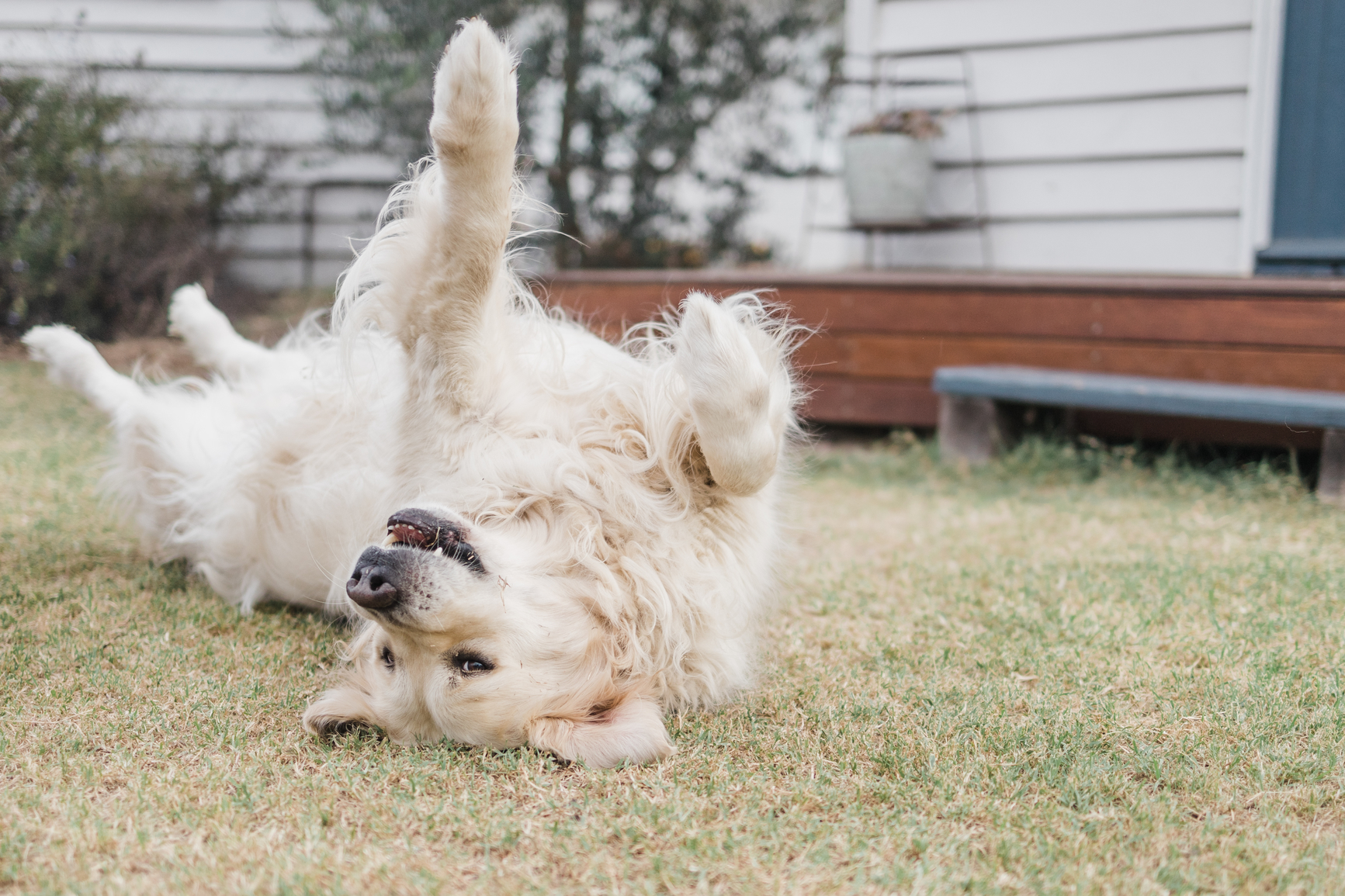As you do everything you can to look after your dog’s wellbeing—including feeding them a healthy, complete and balanced diet, managing their weight, and giving them an appropriate amount of exercise—it’s easy to overlook another important health booster: good dental care.
There are compelling reasons to mind your dog’s teeth. By the time they reach the age of three, at least 80% of dogs face dental disease. That’s a sobering number, especially considering that the effects of tooth and gum problems can spread far beyond a dog’s mouth. When bacteria from periodontal disease gets into a dog’s bloodstream, it can even cause serious issues in the heart, liver, and kidneys. But the good news is that you can make a big positive difference in your dog’s dental health by paying close attention to their teeth and following a few key tips.
Learn to recognize the signs of dental disease
Signs of dental disease in dogs include:
• Bad breath—”dog breath” shouldn’t, in fact, be noxious. Your dog’s breath should be fairly neutral.
• Visible tartar
• Bleeding gums
• Any sign of oral pain–including inability to chew, favoring one side of the mouth, pawing at the mouth, decreased food intake, switching from chewing to gulping food, a new preference for softer food or treats, or crying/whining while eating.
If you notice any of these issues in your dog, schedule a visit with your veterinarian.
Know your dog’s risk factors
Every dog needs dental care, as does every human. But, broadly speaking, smaller and older dogs seem to be at a greater risk of oral-health problems, so you should pay special attention to senior dogs and those who cram those same 42 teeth into a much tinier mouth. Brachycephalic dogs—those with flat faces—may also face more dental challenges due to their anatomy.
Brush your dog’s teeth
Ideally, you’d brush your dog’s teeth every day (after all, we bet you rarely miss a day brushing your own teeth). Having said that, something is better than nothing—if you get to it a few times a week, that can still make a huge difference in your dog’s dental health.
Use only a dog-safe toothpaste recommended by your vet. Human toothpastes are very hazardous to dogs due to ingredients like xylitol (a sugar substitute that’s toxic to dogs, and which you’ll also find in many human foods—so always read ingredient labels). Toothpastes for dogs are specifically formulated to taste good to them, and with ingredients that won’t harm them when swallowed.
It can feel daunting to get started brushing a dog’s teeth, as many dogs understandably don’t like fingers in their mouths. But if you start slow, and keep things positive and fun, most dogs can get used to toothbrushing—or even enjoy it. The steps are the same for dogs of all ages, but the process tends to go faster with puppies.
Go at your dog’s pace so that they stay confident and know that they can trust you—rushing will only upset your dog and set you back. This will take at least several days, and possibly much longer.
Here are the basics:
Step 1: Introduce toothpaste
First, let your dog sniff the toothpaste tube. Then put some of the toothpaste on your finger and allow your dog to sniff and lick it as you praise them.
Step 2: Get your dog used to a finger near their teeth
Only once your dog has gotten 100% comfortable licking the toothpaste off your finger, lift their lip slightly and gently rub toothpaste on their teeth, especially along the gum line. Start with the front teeth, and gradually work your way to the molars.
The idea at this stage is for your dog to be comfortable with your finger being in their mouth and touching their teeth. If they show any signs of stress—like pulling away, turning their head, panting, or growling, to name a few—back off for now.
You want this to be a comfortable routine, not an ordeal. Your first sessions might last only a second or two, and that’s okay.
Step 3: Build consistency
Spend a couple of minutes every day rubbing each of your dog’s teeth with toothpaste on your finger. As your dog gets more comfortable with this process, you should be able to carefully move around your dog’s mouth. Gently lift your dog’s lips and rub against the teeth in all areas of their mouth. Again, if your dog seems uncomfortable, go back a step.
Step 4: Introduce a toothbrush
Toothbrushes for dogs come in two main designs. The first is a rubber brush that slides onto your finger and has bristles on the end. The second has a handle, and looks more like a human toothbrush. Some dogs are more comfortable with the finger version, but whichever model works for you and your dog is fine. Hold the toothbrush with some toothpaste on it and let your dog sniff and lick the toothpaste off of it.
Step 5: Brush!
Once your dog is comfortable with the presence of the toothbrush, put more toothpaste on the brush, gently lift your dog’s upper lip on one side of their mouth, and begin brushing in a gentle circular motion. Concentrate first on brushing the canine teeth and the incisors. If you’ve made some progress with those, pause for praise and a (tooth-friendly) treat. Then resume brushing, covering the premolars and molars (or the “cheek teeth” on the side of the mouth).
Keep sessions brief—they should last only a minute or two. When your dog is first getting used to getting their teeth brushed, it can help to do multiple short sessions throughout the day, or a few times a week. Don’t worry about trying to get your dog’s entire mouth brushed in one sitting. The goal is to end each toothbrushing session while your dog is still happy to participate—and before they get stressed or try to move away. As you work your way around your dog’s mouth, be sure to keep praising them.
Eventually, when you’re covering more of the mouth, be sure to get those back and bottom teeth. To reach the molars, don’t stretch the lip all the way back; instead lift the lip enough to slip the brush in, then let go of the lip and angle the brush toward the gums.
You can also pick up pointers from the video below.
Your dog may or may not come to love these sessions—but with patience and practice, it can become a stress-free part of their daily routine.
Give your dog good chews
Research has shown that a chewing habit can be a plus for dogs’ teeth. Different toys and edible chews promise specific dental benefits for dogs, and have their own pros and cons. Which ones make sense for your dog will vary based on a variety of factors; talk to your vet about your choices.
Keep up with checkups
Regular visits to the veterinarian are important for your dog’s overall health, and any thorough exam should include a look at your dog’s teeth and gums. The team at the vet’s office can let you know if your dog is doing great, or if they’re in need of a cleaning or other care.
Don’t fall for the myth that dogs need to eat kibble to clean their teeth
There’s a persistent misperception that dogs must eat kibble to keep their teeth clean. In fact, kibble is a highly processed, crunchy food, and most varieties are not shown to clean teeth. The most reliable ways to keep your dog’s mouth healthy are:
- Feeding them a healthy, complete and balanced diet
- Brushing their teeth every night with a dog-safe toothpaste
- Giving them appropriate, vet-recommended chews
- Keeping up with veterinary care, including regular dental exams—and, when needed, cleanings
Sticking to this plan will give your dog their best chance at years of fresh breath and more reasons to show off their beautiful smile.





